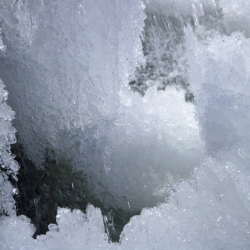
European scientists are meeting to consider options for exploring Europa, a moon of Jupiter. They have ideas that could fit as add-ons to US missions that are to be launched in the 2020s. The concepts range from remote-sensing instruments to penetrators that would try to burrow beneath Europa’s ice surface.
Whatever option is chosen, it will first have to win the support of the European Space Agency. The Paris-based organisation is about to issue a call for proposals to fill a medium-cost launch opportunity – and the invitation will cover the full gamut of space exploration, not just planetary science.
Nonetheless, there is an offer on the table to Esa from its American counterpart, Nasa, to participate in the Europa ventures. These missions will likely include a probe, to be launched in 2022, that will make repeated passes of the moon.
It is very probable also that Nasa will send another craft to make a soft landing. This could launch in 2022 with the first mission, or separately a couple of years later.
The European Europa community believes the opportunity to join in is simply too good to pass up. Europa is one of the most exciting destinations in the Solar System.
Its icy surface hides a deep liquid ocean that could provide a suitable habitat for microbial organisms to flourish. The researchers meeting at the Observatoire de Paris on Tuesday have been woking on broadly five concepts. These are:
A remote-sensing instrument that would go on the Americans’ 2022 probe
A small free-flying satellite that would detach from this probe
A small satellite that would detach from the lander’s "mothership"
One or two instrumented projectiles that would drop from the mothership
An instrument to ride on the soft lander and do science at the surface
Of all of these concepts, the one that has been most intensively studied is the penetrator. This "hard lander" technology is British-led, and has attracted Esa development money in the past.
Demonstrations of the capability have been run by Airbus, the big pan-European aerospace company.
In 2013, it fired a prototype into a block of ice to find out how the technology might perform at Europa. The steel "missile" struck its target at 300m/s, before coming to a rapid stop.
"For a few milliseconds, it’s quite a shock for the instruments," said Geraint Jones from the Mullard Space Science Laboratory, University College London.
"300m/s is around 700mph. Yes, it’s very fast, but some of the instruments have been tested at these speeds and they survived. They worked to take data after the impact and store it safely," he told BBC News.
